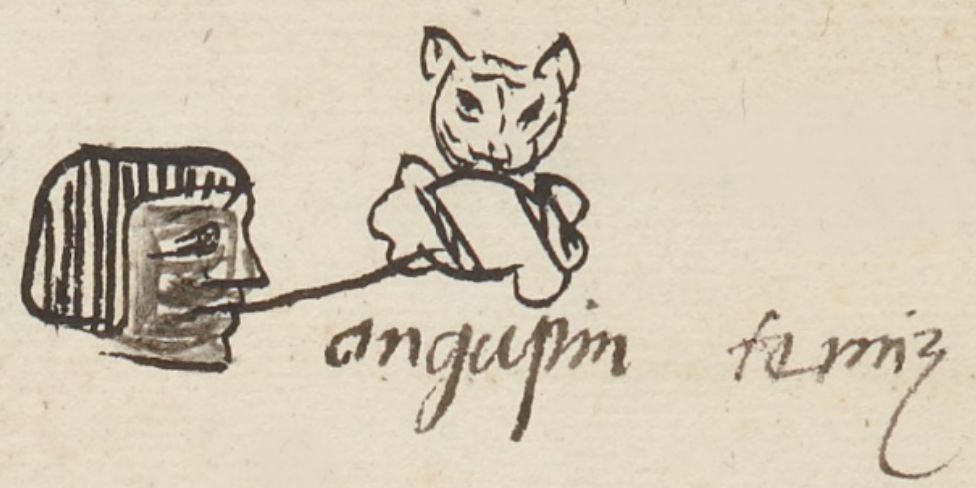Temiz (MH493r)
This black-line drawing of the compound glyph for the personal name Temiz (here, attested male) consists of a frontal view of the head of a wildcat or mountain lion (temiztli) and a horizontal stone (tetl). The cat's eyes are open and its face is textured. The stone has curling ends and diagonal lines across it.
Stephanie Wood
The tetl in this compound does not have a semantic role but provides a phonetic indication that the name starts with Te-, for Temiztli and not some other animal. But reading the glyph out loud would not require that the stone be read. Wildcats, cougars, mountain lions (called pumas in Spanish) are formidable animals. According to twentieth-century ethnography, a nahualli could take the shape of a cat. See Los cuentos en náhuatl de Doña Luz Jiménez, recop. Fernando Horcasitas and Sarah O. de Ford (México, UNAM, 1979), 32–33.
Stephanie Wood
angustin temiz
Agustín Temiz
Stephanie Wood
1560
José Aguayo-Barragán
gatos silvestres, gato salvaje, gato montés, mountain lions, pumas, stones, piedras, wild cats, wildcats, nombres de hombres

te(tl), stone, https://nahuatl.wired-humanities.org/content/tetl-0
miz(tli), wildcat or mountain lion, https://nahuatl.wired-humanities.org/content/miztli
temiz(tli), a wildcat, https://aztecglyphs.wired-humanities.org/content/temiztli
Gato Montés
Stephanie Wood
Matrícula de Huexotzinco, folio 493r, World Digital Library. https://www.loc.gov/resource/gdcwdl.wdl_15282/?sp=65&st=image
This manuscript is hosted by the Library of Congress and the World Digital Library; used here with the Creative Commons, “Attribution-NonCommercial-ShareAlike 3.0 License” (CC-BY-NC-SAq 3.0).






